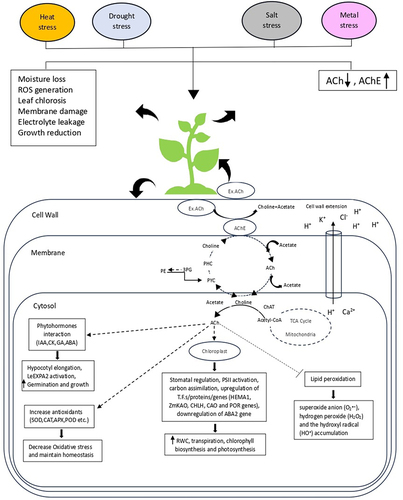Figures & data
Figure 1. The illustration presents mechanisms and responses linked to the interaction of ACh-AChE with different phytohormones and genes for improving plant growth and enhancing stress tolerance to various abiotic stimuli. IAA, indole-3-acetic acid; CKs, cytokines; ABA, abscisic acid; GAs, gibberellic acids; SOD, superoxide dismutase; CAT, catalase; APX, Ascorbate peroxidase; POD, peroxidase; LeEXPA2, tomato expansin gene; HEMA1, glutamyl-tRNA reductase; ZmKAO, Ent-kaurenoic acid oxidase; CHLH, Mg-chelatase; CAO, Chlorophyllide-a-Oxygenase and POR, protochlorophyllide oxidoreductase.

Table 1. An overview of ACh-AChE activity and defense mechanisms in plants under abiotic stresses.
Data availability statement
Data sharing is not applicable to this article as no new data were created or analyzed in this study.
